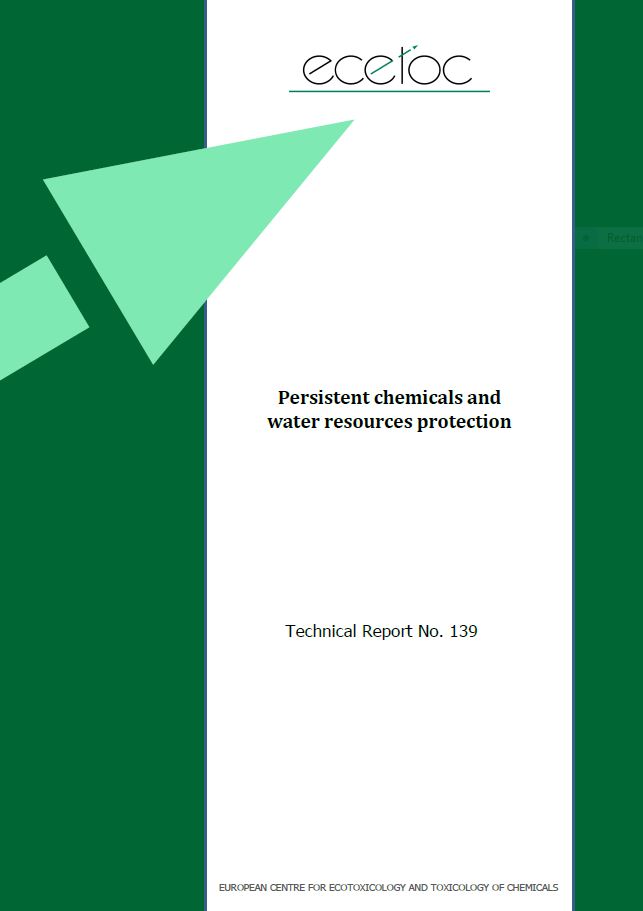Persistent chemicals and water resources protection
Background
Several initiatives end-2017 and 2018 on identification of substances of concern to drinking water resources.
ECETOC role in supporting the development of a science-based framework to assess the potential concern for drinking water resources.
Terms of Reference
- Review current EU legislation pertaining to quality of water sources (GWD, DWD, WFD, Urban Wastewater Directive) as well as other national and international legislation (including US, Canada, Switzerland, Stockholm convention) and associated threshold criteria.
- Assess the appropriateness of the proposed PMT hazard-based approach versus a risk assessment and suitable risk management to guarantee long-term sustainable protection of water sources.
- Review the monitoring data available for levels of mono-constituent substances measured in groundwater and surface water and critically evaluate the currently proposed and eventually revised PMT/vPvM-criteria in the EU.
- Evaluate how and when to consider relevant metabolites in the PMT concept and in the context of protection of water sources via risk assessment.
- Evaluate the relevance and appropriateness of the current mobility criteria ('M'), and, if necessary, make recommendations for parameters/methods to assess hydraulic transport potential to water sources and consider development of a tiered testing approach.
- Evaluate the appropriateness of the additional T criteria in the PMT concept, in light of the existing ones within the PBT concept, and its relevance to a risk assessment approach.
Timeline and deliverables
The following Technical Report has been prepared by the Task Force (report is available for download from the column on the right): TR 139 ‘Persistent chemicals and water resources protection’, published May 2021.
The Task Force is working on a manuscript summarising the Technical Report, with a particular focus on the mobility (M) aspect.
Recent updates and publications
Article on IEAM
"Mobility in the context of exposure‐based assessment of chemicals for drinking water resource protection"
TR 139
Technical report on persistent chemicals and water resources protection
Presentations at SETAC Europe 2020
Conclusions from the ECETOC Task Force
Necessity of Joint Consideration of Persistence and Mobility for Determining the Leaching Potential of Chemicals
Review of monitoring data and critical evaluation of proposed P/vP and M/vM criteria
Consideration of Relevant Metabolites in the Context of the PMT Concept and Protection of Water Resources
Review of predictive risk assessment approaches for the transport of chemicals to groundwater



